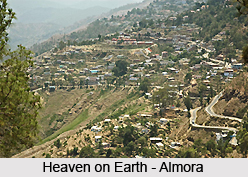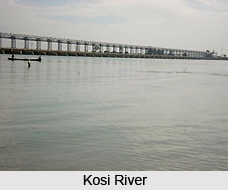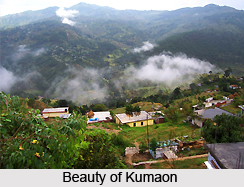 Almora City, the "Switzerland of India" is situated in the Kumaun region. It is located to the east of Uttarakhand and is a cantonment town in Almora district. This cultural capital of Kumaon is one of the three hill districts of Kumaon, besides Nainital and Pithoragarh. It is a picturesque district in the Kumaun region, which forms a part of the eastern Uttarakhand in the Indian subcontinent. The breathtaking panorama of the mighty snowcapped Himalayan ranges in this region has always attracted the tourists for a long time. Almora is an important commercial town and administrative centre. The town is an amalgamation of social and cultural influences of Kumaon. Traces of the old Chand Forts, beautifully carved wooden homes decorated with traditional murals reflect its rich heritage. This city beguiles the tourists not only with the most tied and tested destination but is also famous for its rich cultural heritage, sumptuous cuisine, unique handicrafts, magnificent wildlife, all coupled with an easy accessibility.
Almora City, the "Switzerland of India" is situated in the Kumaun region. It is located to the east of Uttarakhand and is a cantonment town in Almora district. This cultural capital of Kumaon is one of the three hill districts of Kumaon, besides Nainital and Pithoragarh. It is a picturesque district in the Kumaun region, which forms a part of the eastern Uttarakhand in the Indian subcontinent. The breathtaking panorama of the mighty snowcapped Himalayan ranges in this region has always attracted the tourists for a long time. Almora is an important commercial town and administrative centre. The town is an amalgamation of social and cultural influences of Kumaon. Traces of the old Chand Forts, beautifully carved wooden homes decorated with traditional murals reflect its rich heritage. This city beguiles the tourists not only with the most tied and tested destination but is also famous for its rich cultural heritage, sumptuous cuisine, unique handicrafts, magnificent wildlife, all coupled with an easy accessibility.
Almora has a rich history to share. Its history goes back to several centuries in the times of Mahabharata. The Kashaya Hill on which Almora is built finds mention in the Skanda Purana. According to a Chinese pilgrim of seventh century, this city was renowned as the kingdom called `Brahmaputra`. It was situated in the hills and surrounded by snow clad mountains. The hill was inhabited by a tough and uncivilized race in its initial years. According to historical evidence, a kingdom was established fin the beginning by the Katyuris who ruled from Dwarahat in Katurya valley. During his period, Almora city was a small village without much political significance. The history of Almora also depicts the story of Raja Kalyan Chand of Kumaon. In 1563 he made Almora his capital kingdom giving the name of Alam Nagar. In the days of the Chand kings,
 Almora was also known as Rajapur. In addition to that numerous ancient copper plates bear the mention of `Rajpur.` Several other historical significance are associated with this beautiful city. In 1744 Ali Muhammad Khan Rohilla, invaded Kumaon. The Chands could not resist the attack because of their inadequate resources. Finally, Almora was taken over. However, generals of the Ali Muhammad Khan Rohilla army were unable to bear with the hardships of the hilly terrain and thus returned. But, Rohilla unsatisfied with their conduct, unleashed another attack on the town in 1745. Consequently, he lost the battle and never came back to invade the region. Almora was rules for over twenty four years from 1790 by the Gorkhas and was captured by Colonel Nicholls of the East India Company. In 1884, the British transferred their centre of control of the Kumaoni hill region from Almora to Nainital. Since independence, Almora has gained importance in all spheres. At present, it is a primary centre of all kinds of activities such as political, cultural, social, and educational in the Kumaoni hill region.
Almora was also known as Rajapur. In addition to that numerous ancient copper plates bear the mention of `Rajpur.` Several other historical significance are associated with this beautiful city. In 1744 Ali Muhammad Khan Rohilla, invaded Kumaon. The Chands could not resist the attack because of their inadequate resources. Finally, Almora was taken over. However, generals of the Ali Muhammad Khan Rohilla army were unable to bear with the hardships of the hilly terrain and thus returned. But, Rohilla unsatisfied with their conduct, unleashed another attack on the town in 1745. Consequently, he lost the battle and never came back to invade the region. Almora was rules for over twenty four years from 1790 by the Gorkhas and was captured by Colonel Nicholls of the East India Company. In 1884, the British transferred their centre of control of the Kumaoni hill region from Almora to Nainital. Since independence, Almora has gained importance in all spheres. At present, it is a primary centre of all kinds of activities such as political, cultural, social, and educational in the Kumaoni hill region.
Geographically, Almora City enjoys a significant position. It is located at 29.62 degree N 79.67 degree east. It has an average elevation of 1,651 metres (5,417 feet). It is located on a ridge at the southern edge of the Kumaon Hills of the Himalaya range. Almora City is situated in the shape of a horse saddle shaped hillock. It is surrounded by thick forests of pine and fir trees, flowing alongside the city are rivers of Koshi (Kaushiki) and Suyal (salmale). The snow capped Himalayas can be seen in the background. The surrounding cities of Almora consists, to its east, lies Champawat district, to the west lies the district of Garhwal (Pauri and Chamoli) and to the North lies district of Bageshwar and in the South there is the district Nainital. The total area covered by the city of Almora is 3,689.46 Square Kilometer.
The district of Almora City summons tourists from all over the globe to its mesmerizing grandeur of natural splendor. Nestled in the scenic locales with the solitude and tranquility, Almora forms a very fascinating tourist spot. This city in Uttarakhand is abundant with three things as romance, charm and serenity. The place appears to be a heavenly abode.
 The best time to visit this heavenly place is from April to June and from September to November. In fact it can be visited anytime of the year. The temperature of this hill station in summer remains to be comparatively more than the other hill stations.
The best time to visit this heavenly place is from April to June and from September to November. In fact it can be visited anytime of the year. The temperature of this hill station in summer remains to be comparatively more than the other hill stations.
Almora is quite convenient to reach. It is linked by frequent trains to and from the major metros as well as the other destinations of India. The national and state highway network links this town to many important cities in India. All sorts of hired transports are available and all come with experienced drivers. The nearest airport of Almora is Pant Nagar (Nainital) and from there one can easily avail regular buses and taxis. The nearest railway station near Almora is Kathgodam.



















